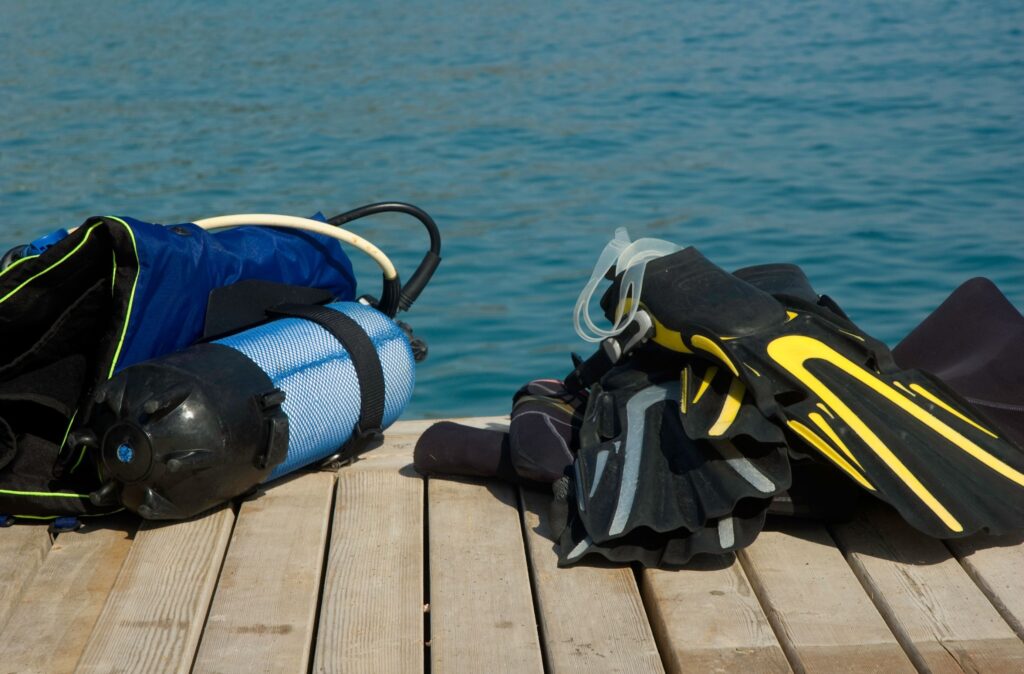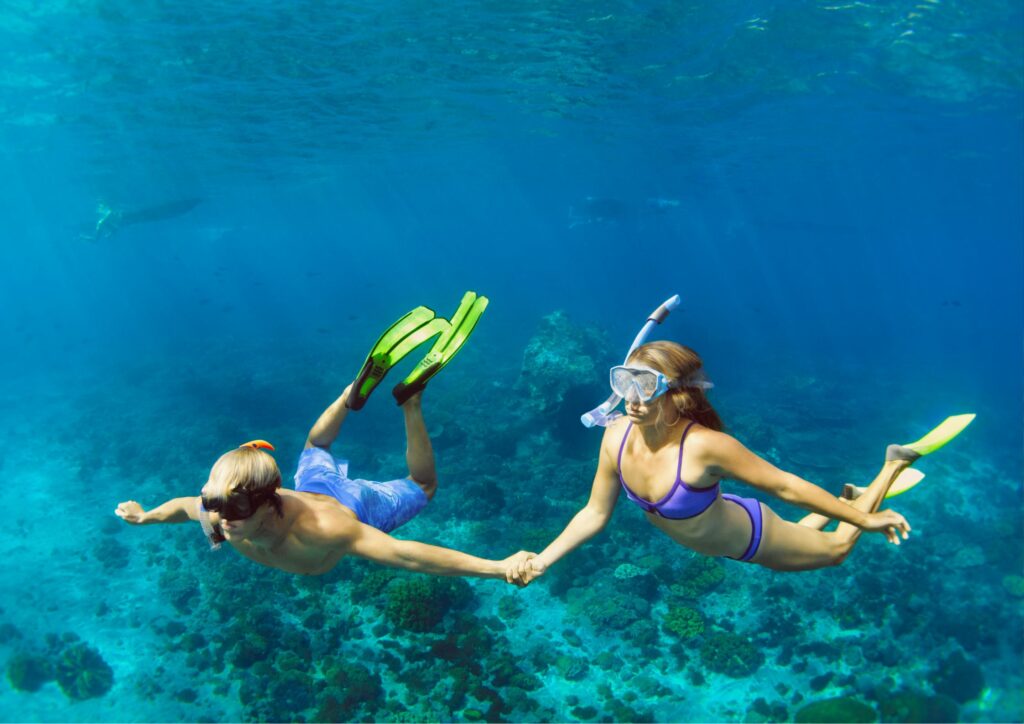Diving and snorkelling are two popular aquatic activities that allow enthusiasts to explore the underwater world, yet they cater to different experiences and skill levels. Understanding the key differences between the two can help you choose the right adventure for your needs. Whether it’s using snorkel equipment to stay near the surface or managing breathing pressure air in the tank for deeper exploration, each activity requires a unique set of skills, including swim skills and buoyancy skills that can determine your overall enjoyment and safety. Join us as we delve into the three main differences that set diving and snorkelling apart.
Understanding the Basics of Snorkelling
Snorkelling is a popular water activity that allows individuals to explore the underwater world while floating on the surface. The primary equipment used in snorkelling includes a mask, snorkel, and fins, which enable users to breathe while keeping their face submerged. Unlike diving, snorkelling requires minimal training, making it accessible to people with varying swim skills. Participants can enjoy the beauty of coral reefs and marine life without the need for complex buoyancy skills or heavy equipment. The simplicity and ease of snorkelling make it an appealing option for those looking to experience underwater sights without the commitment that diving entails.
Essential Gear: Snorkel Equipment vs. Diving Gear
When comparing diving and snorkelling, the essential gear used in each activity plays a crucial role. Snorkelling primarily requires snorkel equipment, which includes a mask, snorkel, and fins, allowing enthusiasts to observe underwater life while floating on the surface. This setup is lightweight and uncomplicated, making it accessible for individuals with basic swim skills. In contrast, diving gear is more complex, involving a tank for breathing pressure air, wetsuits for thermal protection, and buoyancy control devices. These components are essential for deeper exploration of aquatic environments, requiring an understanding of buoyancy skills to manage depth effectively.
Breathing Techniques: Air Pressure and Tank Usage
When it comes to breathing techniques, diving and snorkelling differ significantly, primarily in their reliance on air supply systems. Divers rely on breathing pressure air in the tank, allowing them to explore greater depths underwater for extended periods. This use of a tank means divers must master buoyancy skills and managing their air supply efficiently to prevent potential hazards. On the other hand, snorkellers utilize snorkel equipment, allowing them to breathe through a tube while floating on the surface, capturing the vibrant underwater scenery without the need for heavy gear. Swim skills are essential for both activities, yet snorkelling typically demands less advanced techniques compared to diving.

The Importance of Swim Skills in Both Activities
Swim skills play a pivotal role in both diving and snorkelling, though their requirements often differ. In snorkelling, the primary concern is surface swimming, which allows enthusiasts to float on the water while observing marine life. Basic swim skills are essential here to ensure safety and comfort in the open water. Conversely, diving involves a deeper immersion into underwater realms, requiring more advanced swim and buoyancy skills. Divers must manage their buoyancy to control their ascent and descent, along with mastering the use of snorkel equipment and understanding breathing pressure air in the tank. Both activities necessitate confidence in the water, but diving demands a higher level of proficiency.
Buoyancy Skills: How They Differ Between Diving and Snorkelling
Buoyancy skills play a crucial role in both diving and snorkelling, but the approach to mastering them varies significantly. In diving, individuals must manage their buoyancy effectively, often using specialized equipment such as a buoyancy control device (BCD) to adjust their position underwater. The diver learns to control breathing pressure, adjusting their air in the tank to help them rise or descend. On the other hand, snorkelling typically requires less buoyancy management since snorkelers stay on the surface. Swim skills are mainly focused on maintaining a comfortable position while efficiently using snorkel equipment to breathe. Therefore, while buoyancy is important in both activities, the techniques and skills utilized differ greatly.
Depth and Safety Considerations
When comparing diving and snorkelling, depth and safety considerations are paramount. Snorkelling allows individuals to explore shallow waters, usually up to 10 feet deep, making it accessible for beginners with basic swim skills. The use of snorkel equipment, such as masks and fins, facilitates breathing at the surface while observing marine life. In contrast, diving involves greater depths requiring specialized training and equipment, including tanks that contain breathing pressure air for deeper excursions. Safety measures are crucial in both activities, but the risks associated with diving necessitate a higher level of buoyancy skills and emergency preparedness.
Experience Levels Required for Each Activity
Diving and snorkelling cater to different experience levels, making them suitable for various enthusiasts. Snorkelling typically requires minimal training; individuals only need basic swim skills and comfortable use of snorkel equipment. Most people can start snorkelling with just a short introduction, as they can stay at the surface and explore the underwater world without extensive preparation. In contrast, diving requires more in-depth knowledge and training. Divers must understand breathing pressure air in the tank, buoyancy skills, and safety protocols, which often necessitate formal certification. Consequently, diving is generally suited for those who have the time and desire to commit to learning about underwater environments intricately.
Final Thoughts on Diving and Snorkeling in Bali
In summary, both diving and snorkeling offer unique underwater experiences that cater to different preferences and skill levels. While divers utilize specialized snorkel equipment and manage factors like breathing pressure air in the tank, snorkelers can enjoy the beauty of marine life with minimal gear. Understanding these key differences will help you choose the best activity for your beach adventure, ensuring a memorable experience whether you are diving deep or floatingly snorkeling along the surface. Moreover, your individual swim skills and buoyancy skills will play a significant role in determining which activity is best suited for you.
Bali Diving offers some of the most breathtaking underwater experiences, making it a paradise for both divers and snorkelers. The island’s rich marine biodiversity, crystal-clear waters, and vibrant coral reefs provide an unparalleled backdrop for underwater exploration. Whether you’re diving into the depths to explore sunken wrecks like the USAT Liberty or snorkeling above the coral gardens teeming with life at Amed or Menjangan Island, the experiences are both thrilling and serene.
Bali’s unique underwater landscapes cater to all levels of experience, from beginners to seasoned divers, ensuring that everyone can enjoy the wonders of the ocean. As you explore these aquatic wonders, you’ll not only witness the incredible marine life that thrives beneath the surface but also gain a deeper appreciation for the delicate ecosystems that call Bali home. In conclusion, diving and snorkeling in Bali are not just activities; they are journeys into a mesmerizing underwater world that leaves lasting memories and a profound respect for the ocean’s beauty and diversity.

I really enjoyed reading this blog post! The differences between diving and snorkelling are so important to understand before you start your underwater adventure. I appreciate the detailed explanations of each activity and the importance of swim skills and buoyancy skills.
Hi Emily, thank you for sharing your thoughts on our blog post! We’re thrilled to hear that you found the information helpful in understanding the differences between diving and snorkelling. At Gill Divers, we believe that it’s essential to have a solid grasp of the basics before embarking on an underwater adventure. Our team is always happy to provide guidance and support to ensure that our customers have a safe and enjoyable experience. If you have any further questions or would like more information on diving and snorkelling in Bali, please don’t hesitate to reach out to us. Tel: +65 6734 9373, Email: [email protected].
This post is so helpful for beginners like me who are thinking about trying diving or snorkelling. The comparisons between the two activities and the necessary skills are really informative. I’m excited to try out snorkelling first!
Hi Khairul Anwar, thank you for your comment! We’re thrilled to hear that our post has been helpful in informing your decision about trying diving or snorkelling. Snorkelling is indeed a fantastic way to start exploring the underwater world, and we hope you have an amazing experience! Remember to always prioritize safety and follow guidelines when using snorkel equipment. If you have any questions or need further guidance, don’t hesitate to reach out. Best regards, Gill Divers.
I completely agree that understanding the differences between diving and snorkelling is crucial for a safe and enjoyable experience. This post provides a great overview of the essential gear, breathing techniques, and swim skills needed for each activity.
Thank you for sharing your thoughts on the importance of understanding the differences between diving and snorkelling! We at Gill Divers couldn’t agree more. It’s great to see like-minded individuals such as yourself who prioritize safety and enjoyment while exploring the underwater world. If you have any questions or would like to learn more about our services, please don’t hesitate to reach out to us. Our team is always happy to help. Tel: +65 6734 9373, Email: [email protected]